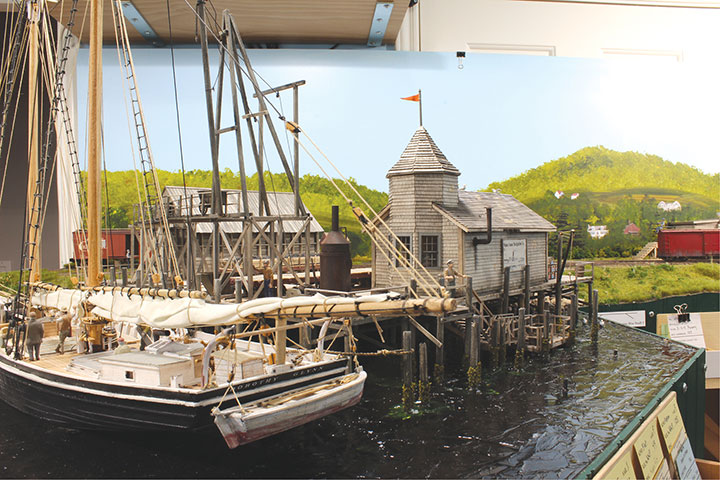Background
I started building my On30 layout based on the Maine 2-foot gauge Wiscasset, Waterville & Farmington Railway in 2012. We had just moved to a new house in Houston and I needed to start a new layout. The idea for this layout was generated 25 years earlier when I purchased Two Feet to Tidewater by Jones and Register. I was drawn to the painting on the dust jacket of a small steam locomotive pulling a few old wooden cars across a trestle in front of some seaside industries. This image inspired me to buy the book, and start on a decades-long quest to build my version of the WW&F.

I had been building and rebuilding N scale layouts for a number of years, so I thought modeling the WW&F in HOn30 would be the best way to go, since I had been inspired by the work of Frary and Hayden. I tried HOn30, but quickly learned that my modeling skills and knowledge were both lacking. To improve my skills, I focused my attention on building various N scale projects, gathering prototype information, design-ing some track plans, and building some HO models over the next 20 plus years.
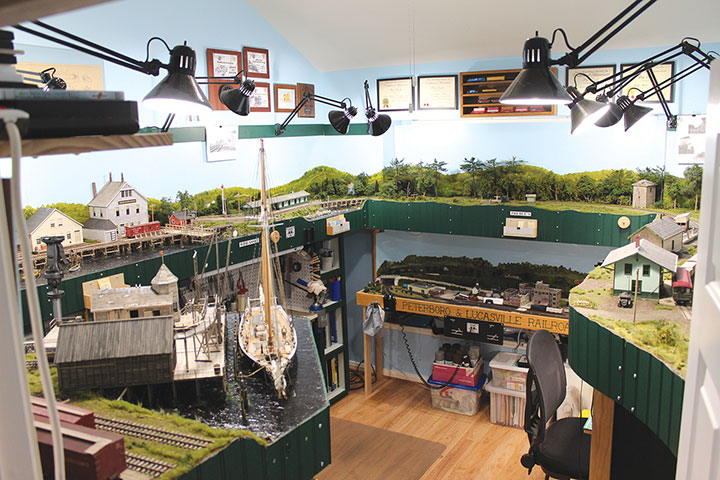
In 2011, I purchased a Bachmann On30 Forney to test. After running it on some HO flex track taped to the floor, I realized this was the scale for me! I tore down my N scale layout and started planning my WW&F layout. Then my wife and I decided to move to Houston, a land with no basements.
My layout fits into a 10- x 12-foot spare bedroom. Obviously, I couldn’t fit the whole 40 miles of prototype track into the space, but I could include a reasonable amount of the towns of Wiscasset and Albion. So I designed my layout as a switching line with scenes inspired by the real railroad.
The Prototype
The original prototype railroad was called the Wiscasset & Quebec and started construction in the 1890s in the seacoast town of Wiscasset. The idea was to build north up the Sheepscot River valley and on to Quebec in Canada. The builders chose 2-foot gauge to save money on construction, equipment and operating costs. Typical of most narrow gauge lines, they were short of money and realistic expectations. They quickly ran out of funds north of Albion and had to abandon the idea of going to Canada. They renamed the railroad and tried to connect with the Sandy River system in Farmington, but that didn’t materialize either. By the mid-1920s, the WW&F ran from Wiscasset to Albion, about 40 miles away.

The Layout
The benchwork is the tried and tested L-girders with ½-inch thick plywood and Homasote. The track is all hand laid using Micro Engineering Code 83 rail on 1/8-inch square basswood ties. The turnouts are hand built #5’s using a Fast Tracks™ assembly fixture and jigs.
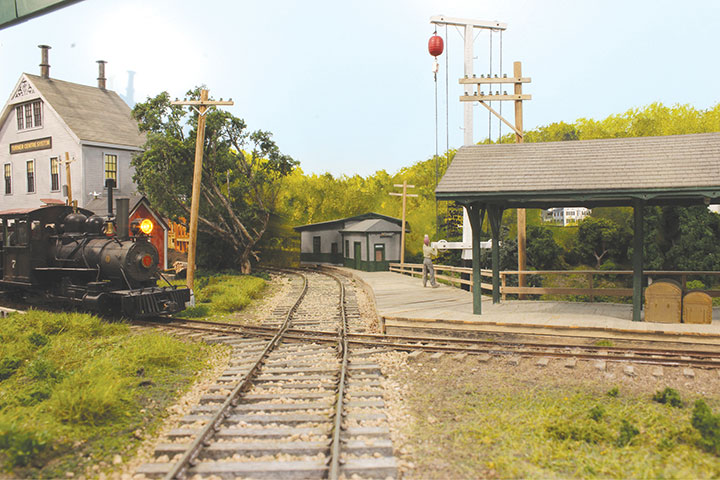
I am a modeler at heart so most of my structures and rolling stock are scratchbuilt. All the structures have interior details and lighting. I used the Just Plug® lighting system from Woodland Scenics because I find no enjoyment in wiring.
There are about a dozen cars on the layout that represent specific cars on the prototype. All but 2 were scratchbuilt using published plans. The 2 kits are from Train Troll and are excellent! I have two Bachmann Forneys that have been altered to look like WW&F #7 and #4 (#4 was described in the March/April 2017 GAZETTE.)
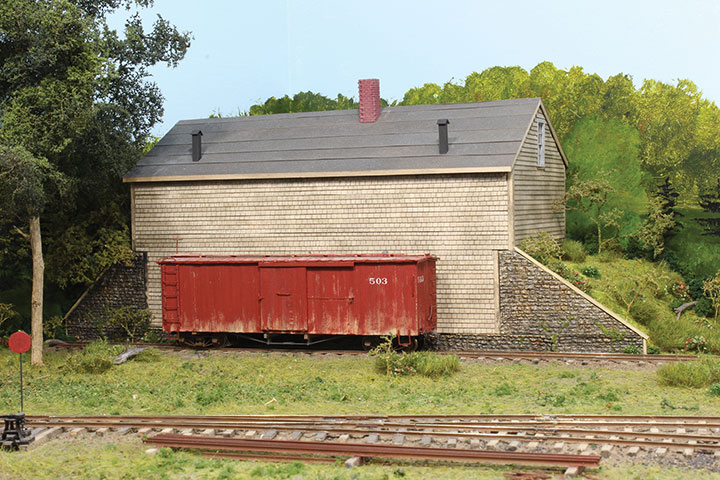
The layout is run as a switching operation. The single waybill method I use was described in the January/February 2016 GAZETTE. I found great enjoyment in researching the various commodities shipped on the railroad. The main products were sawn lumber, milk, and other agricultural goods. This knowledge helped develop an operating scheme that feels like you are moving real goods between the towns.
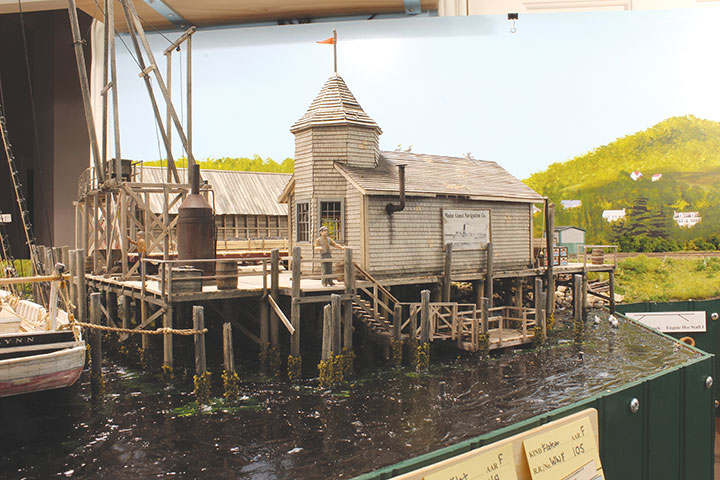
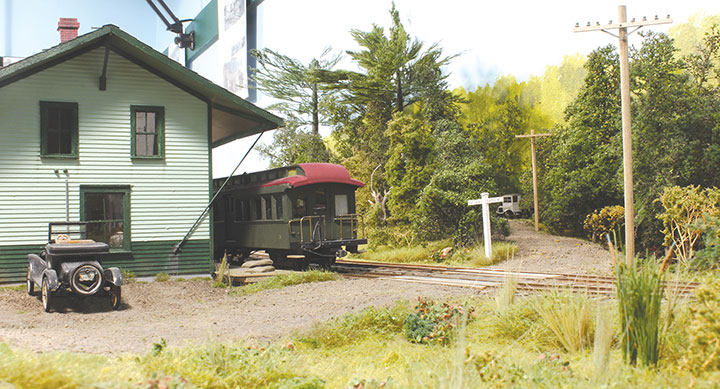
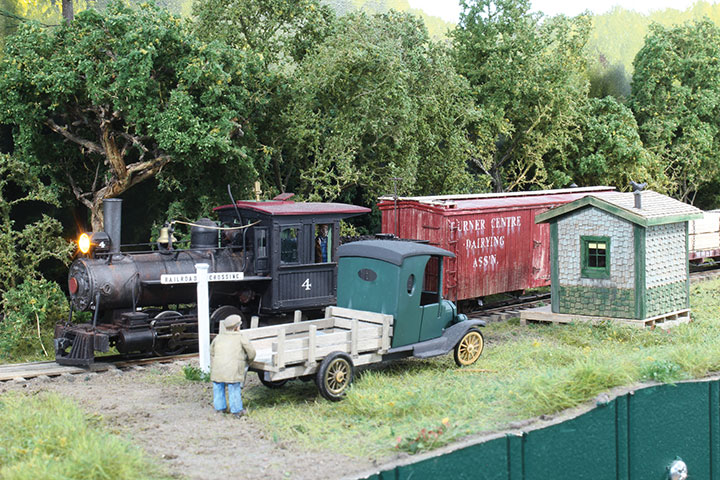
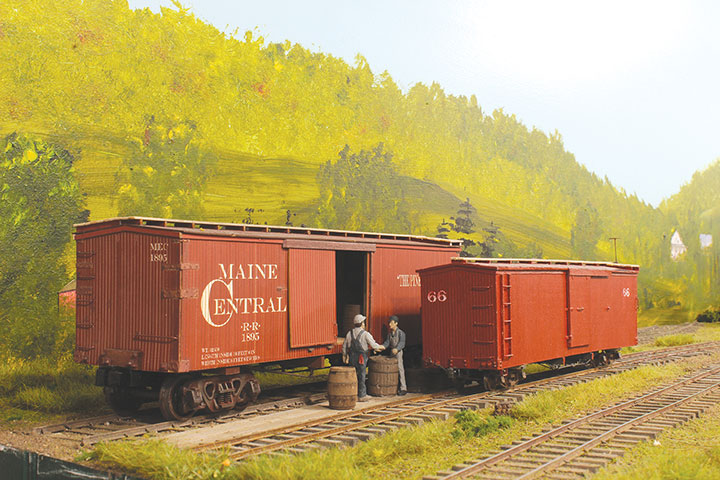
All products shipped in to or out of the valley on the railroad were transferred to the Maine Central or onto ships in Wiscasset. The layout includes the transfer yard and a condensed version of the Railroad Wharf. Both aid in the operations of the layout and the scenic elements. When designing the wharf, I knew a schooner would be needed. Scratchbuilding a waterline model of a two-masted lumber schooner was an intense, but enjoyable project. She is named for my late mother, Dorothy Glynn.
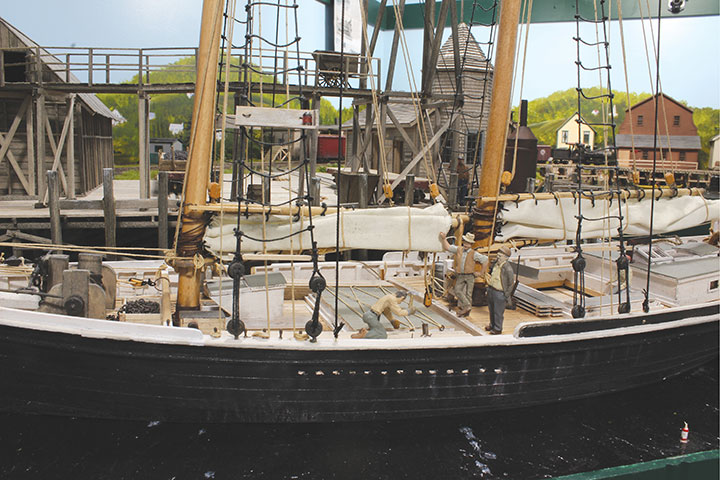
The waterfront scene from that dust jacket was duplicated using scratchbuilt structures, including the trestle. There are kits available of these buildings from Deerfield River Laser for those who want to build the scene, but are not into scratchbuilding.
Albion is modeled on the opposite side of the room and includes most of the key structures. Some were relocated from the prototype position so they would fit the space. Some were selectively compressed.
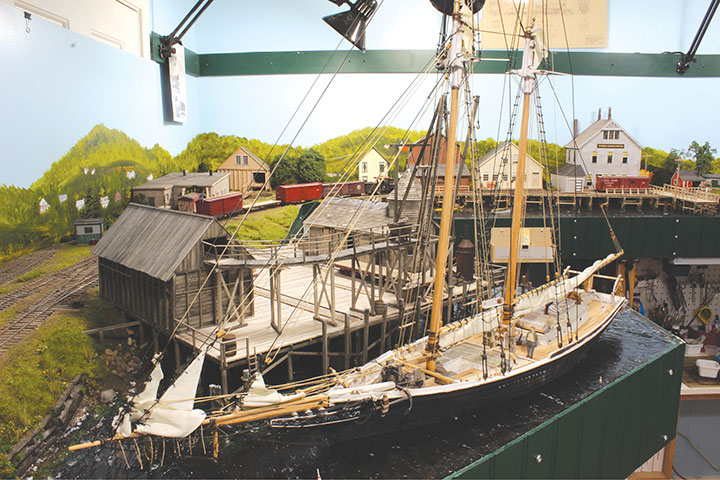
I found track planning easier on the benchwork itself. HO flex track was used to plan the right of way. I made full scale mock-ups of several structures to help visualize the scene and check clearance. The mock-ups were made of foam core and covered with copies of the drawings. Some stayed on the layout for years before being replaced with the actual model.
The switch from N Scale to O scale forced me to learn how to treat the transition from the scene to the backdrop. Forced perspective methods were used in places to give the scene greater depth. Also, modeling scenery in O scale requires a lot more layers and details. One important scenic element that gave me trouble was building Eastern White Pine trees. My friend, Trevor Marshall, pointed me to modeler Ryan Mendall’s blog. Ryan had developed a method to scratchbuild the EWPs needed for my layout.
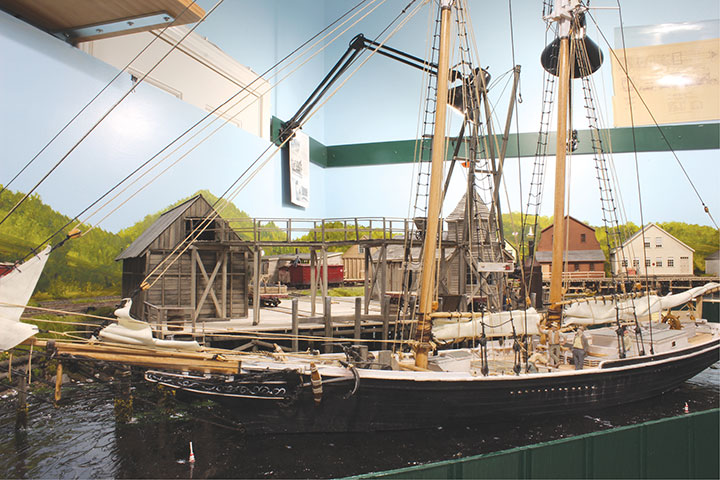
The layout is near completion. There are details to be added, such as more gulls and people. I also have plans to build a waterline model of the steamship Salicia. She carried passengers and freight between the various coastal ports in Maine. Although she was no longer running in the 1925 era I model, she will look nice alongside the Pier Station on the Wharf.
Building this layout has been a fun journey. I’ve learned many new skills and techniques during the construction. I’ve met many folks along the way that helped me by sharing their knowledge and encouragement. I have enjoyed sharing the story of my journey with all of you.
